14 pointing dog breeds from around the world
While they definitely have plenty of energy, they have a lot of love to give as well – could one of these pointing dogs be your next canine companion?
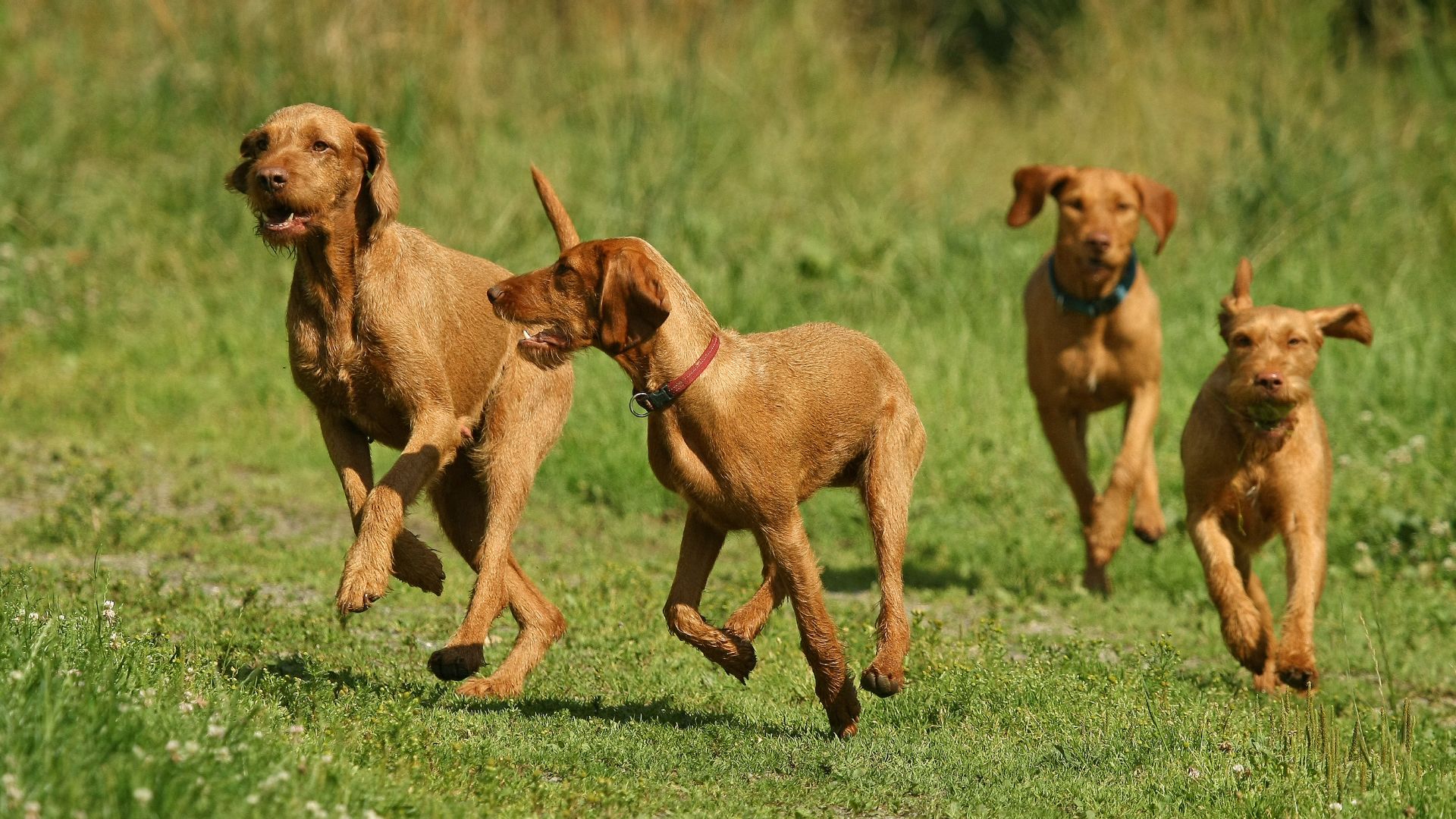
Pointing dog breeds were originally bred as gundogs, typically used for finding game. When a pointing dog sniffs out game, they go “on point”, freezing in position, lifting a paw and aiming their nose towards the game.
The now-extinct Old Spanish Pointer is considered the ancestor of all pointing dog breeds, used for hunting in England and Spain around the 18th century. Over time, a variety of pointing breeds were selectively bred, and the American Kennel Club (AKC) now recognises 14 pointing breeds as part of their Sporting group.
These breeds are generally known for being high energy, intelligent, loyal and courageous. They’re some of the best hunting dogs and make for excellent hunting companions, being able to cross rugged terrain and work either alongside their handler or following instructions at a distance.
Their fun-loving nature and good temperament also make them an excellent pet for an adventurous family – provided they get enough exercise and mental stimulation.
Consistent, regular training and socialisation from an early age is key to ensuring these energetic dogs remain happy and relaxed, because boredom can quickly turn into destructive behaviours. While they make fantastic companions, remember their working dog history – they love to have a job to do.
Below, we explore the 14 pointing dog breeds recognised by the AKC, and vet Dr Rebecca MacMillan shares her expert advice on owning and training pointing dogs.
Pointing dog breeds
1. Bracco Italiano
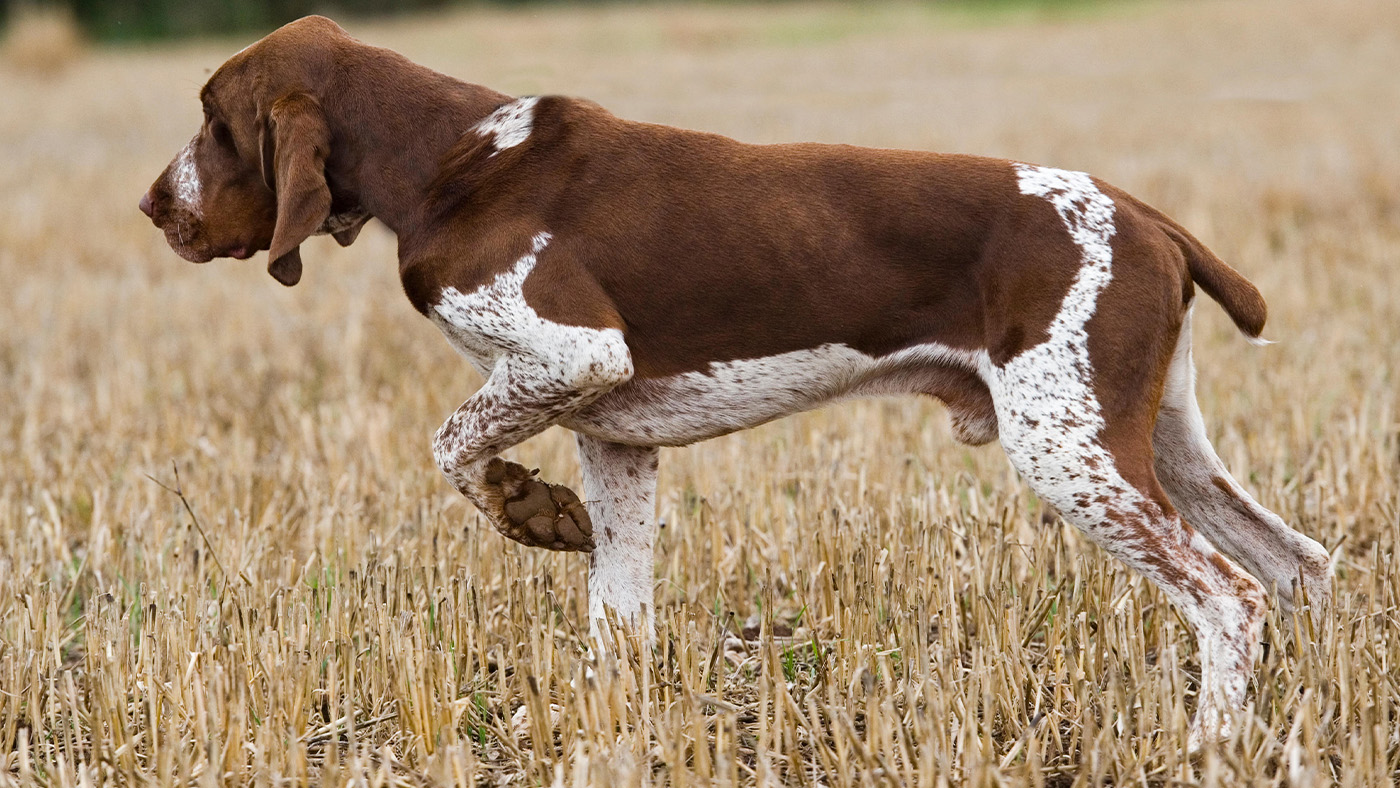
One of the oldest pointing breeds, the Bracco Italiano, as its name suggests, hails from Italy. The hardworking Bracco Italiano is renowned for its reliability in the field as well as its gentle nature in the home.
Get the best advice, tips and top tech for your beloved Pets
These powerhouse dogs have a real athletic look about them, with a noble expression and long, droopy ears. Known for being sensitive and calm, Bracco Italianos are a welcome addition to a family home, generally getting on well with other dogs and children.
2. Brittany
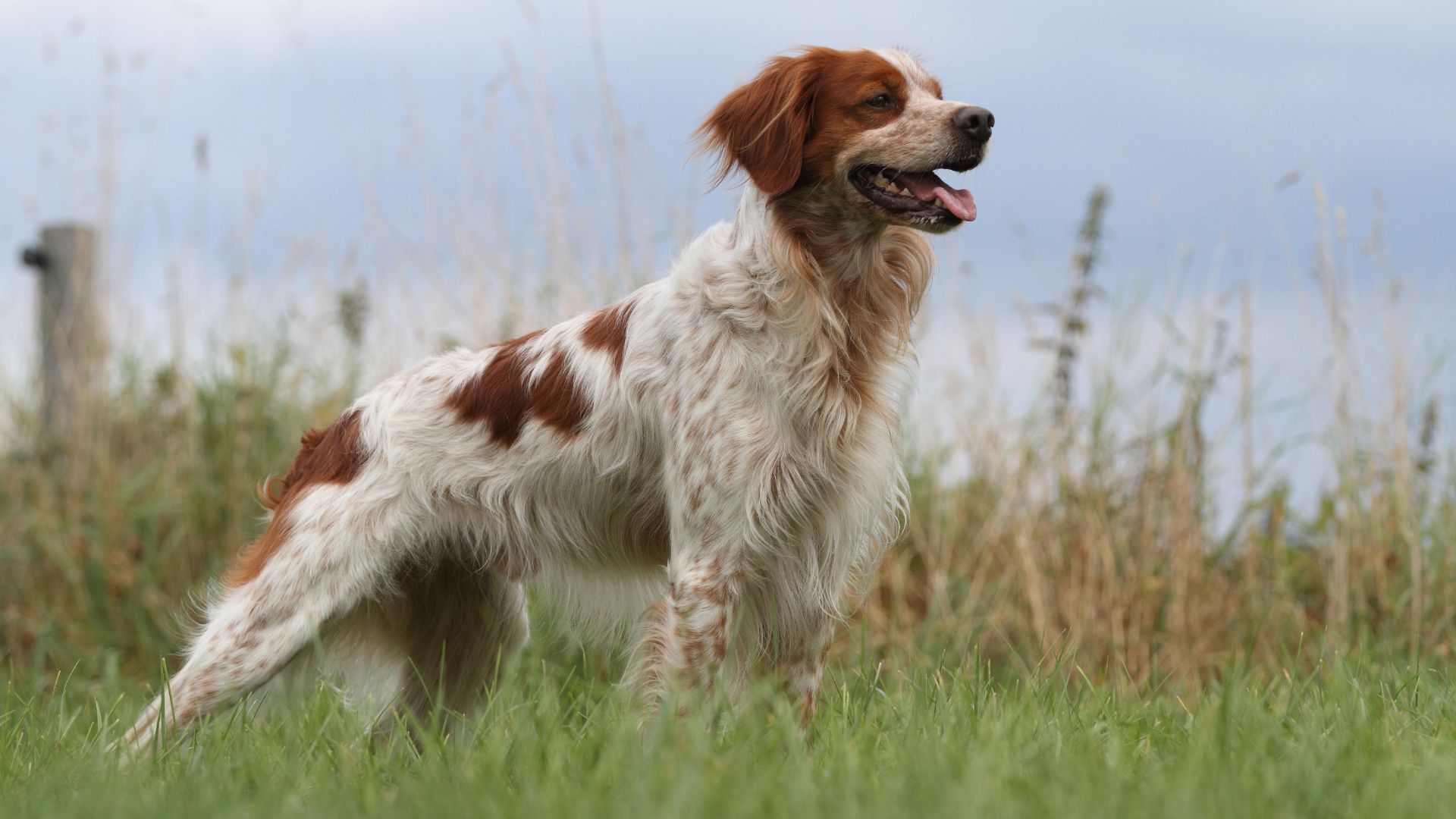
Sometimes referred to as the Brittany Spaniel, the Brittany is actually a pointing breed. They are smaller than setters but leggier than spaniels. They were developed in rural Brittany in north-west France, primarily as bird dogs.
Today, these plucky dogs are known for their stamina and scenting skills. Their bright coats and kind faces make them a truly beautiful dog, and their intelligence and zest for life makes them highly trainable. Their energy to go all day long means they’re great hunting companions, but they can also turn their paws into a variety of dog sports, such as flyball, dock diving, agility and obedience.
3. English Setter
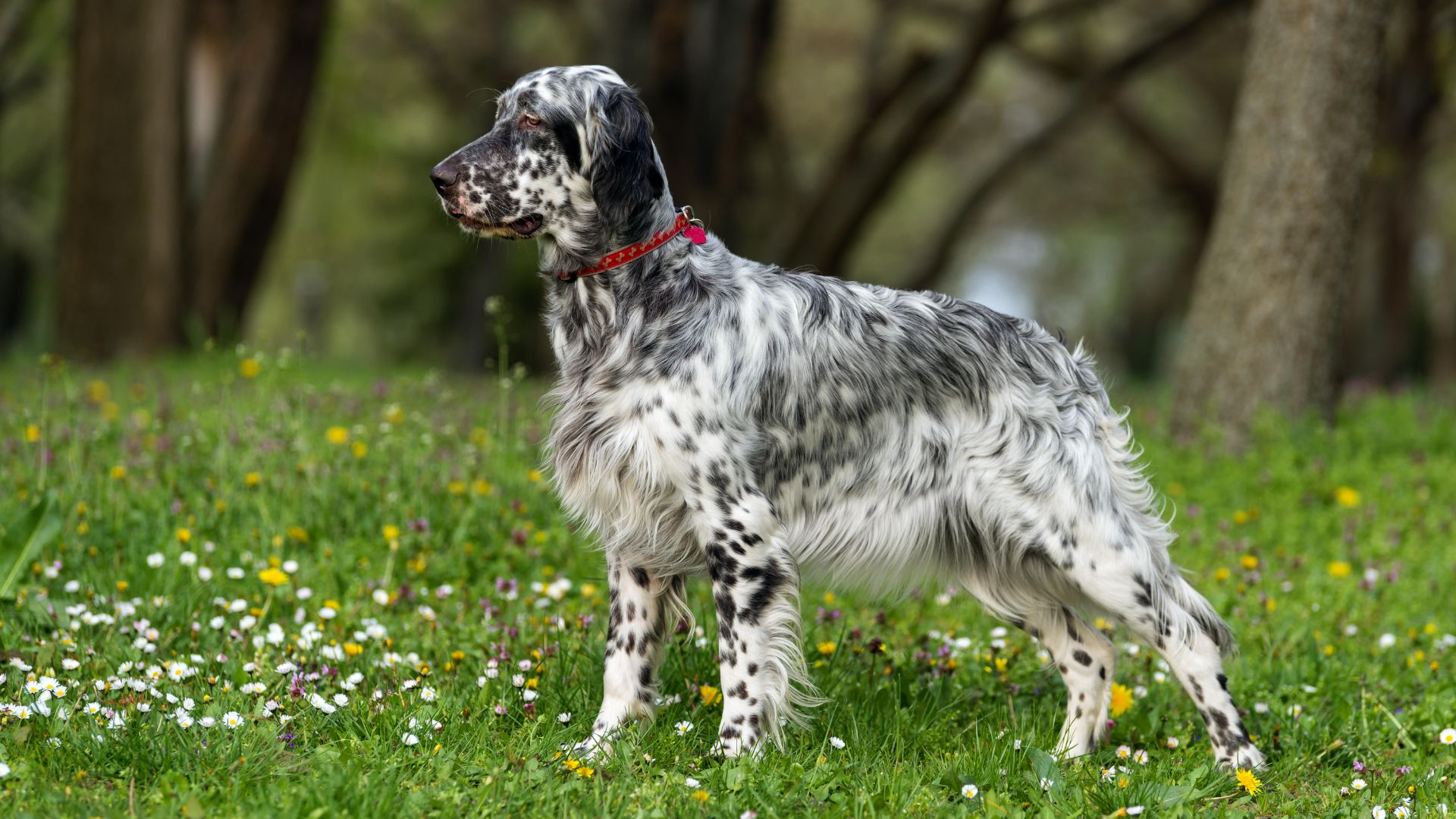
The English Setter originated around 500 years ago, hunting game such as pheasant and grouse across the UK. Traditionally, setters would lie down, or “set”, when they detected game, but over time they stood and pointed like other pointing breeds.
This friendly breed is known for being more chilled out than other pointing dogs, making them a great choice for a family companion – although they do still need plenty of exercise thanks to their playful temperament.
Their striking speckled coat is known as “belton”, and this sweet-natured breed is renowned as the “gentleman of the dog world”.
4. German Shorthaired Pointer
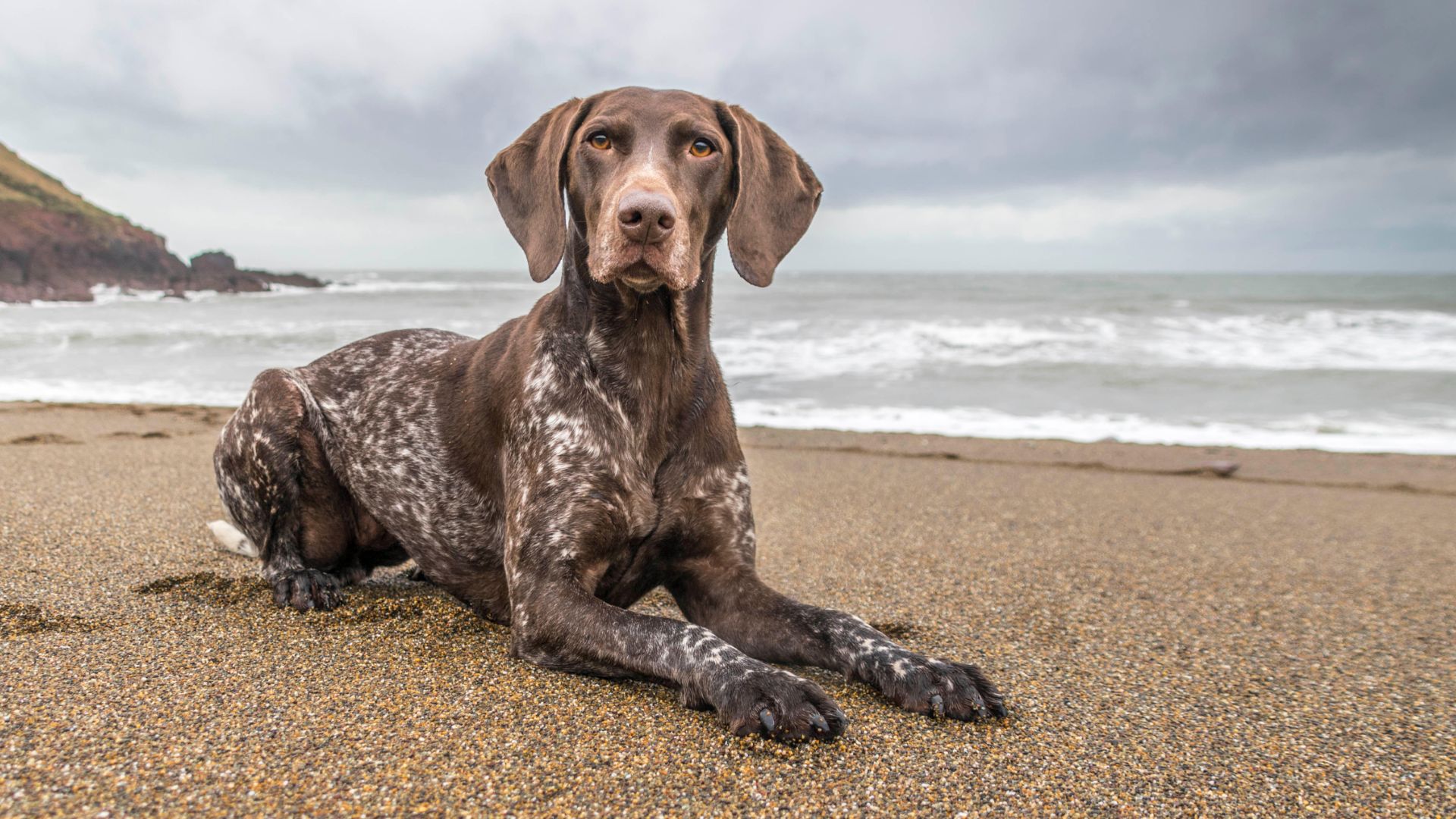
German Shorthaired Pointers, or GSPs, originated in Germany, bred to be true all-purpose hunting dogs. These enthusiastic dogs are happiest when they have a job to do in the field, but they also make great companions, bonding strongly with their family.
These happy dogs are eager to please, but they do need to be kept busy and active to stimulate their minds, or boredom can quickly set in. They are known for their speed, agility and endurance, and their good looks and kind expressions make them one of the most popular pointing breeds.
5. German Wirehaired Pointer

Closely related to the GSP, the German Wirehaired Pointer (GWP) is a wire-haired dog breed and has, as its name suggests, a thicker, coarser coat than its shorthaired counterpart.
Their wiry coat gives them extra protection when working in water and rough conditions. Slightly larger than GSPs, GWPs have an independent and inquisitive nature, so they’re not the best option for novice owners.
Their shaggy eyebrows give them an intelligent expression, and provided their exercise needs are met – they will quite happily work all day long – they make great companion dogs and will be devoted to their owner.
6. Gordon Setter

The Gordon Setter was developed in Scotland in the 19th century, with the aim of producing a working dog that could hunt, point and retrieve across Scotland’s rugged terrain. The largest of the setter breeds, these dogs are bold and fearless in the field, but they are also known for their affectionate behaviour in the home.
Like all pointing breeds, the Gordon Setter has plenty of energy and so needs an adventurous family to meet its needs. It is known to mature fairly slowly, displaying puppy-like behaviour well into adulthood. These loyal companions can be wary of strangers.
7. Irish Red and White Setter
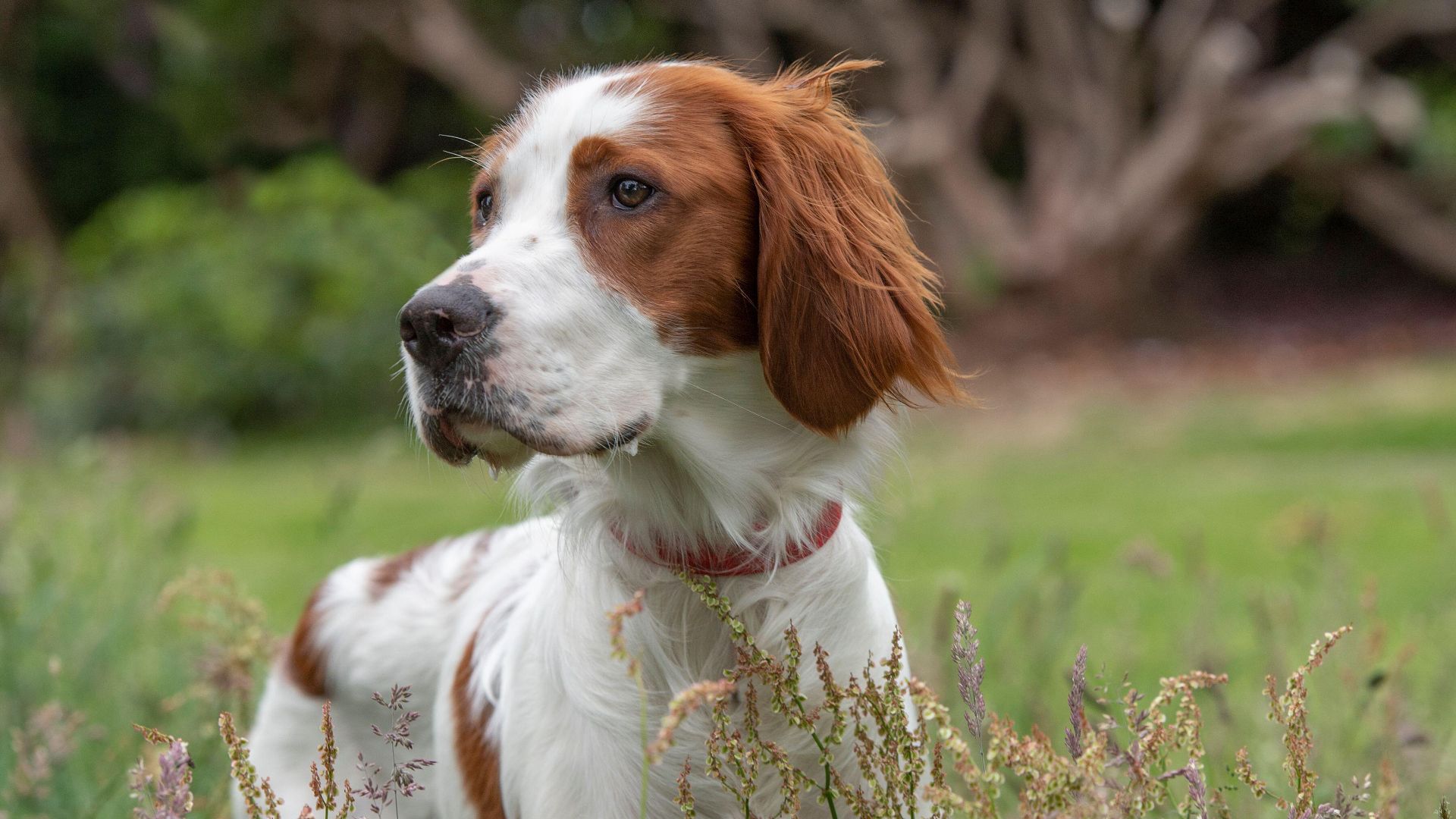
The powerful Irish Red and White Setter almost went extinct after World War I, but the breed was thankfully revived in the 1920s, although it is still considered vulnerable. Like other setters, this breed was originally used by falconers, freezing or “setting” to indicate the presence of game. Its striking red and white coat made it easy to spot when working at a distance.
These highly spirited dogs still have a great work ethic to this day, and they make a playful and loyal companion. Their affectionate nature means they’re great family dogs, but they do need plenty of exercise and mental stimulation to keep them occupied.
8. Irish Setter
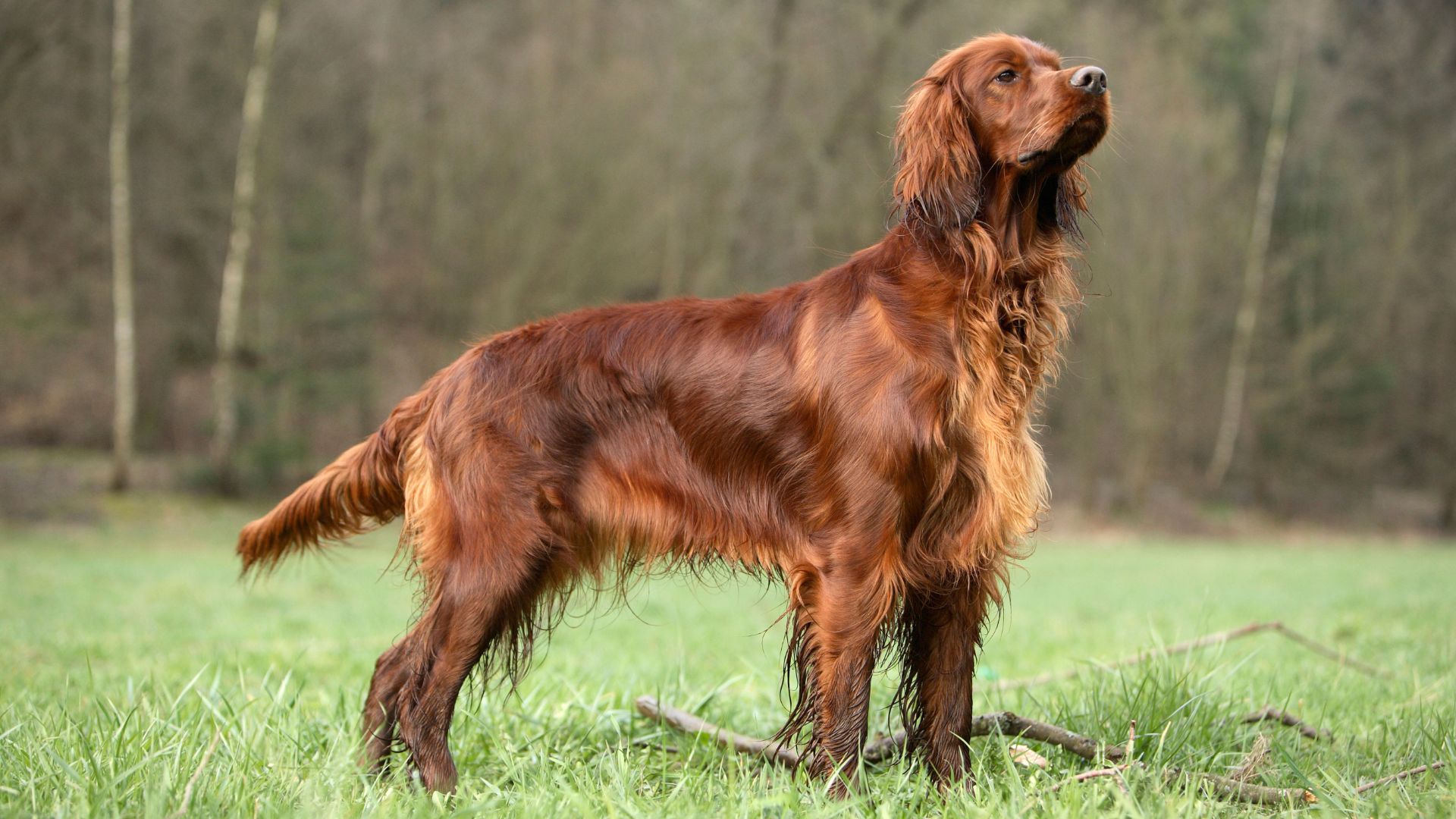
The Irish Setter, also known as the Red Setter, originated in Ireland in the 1800s as a powerful yet graceful hunting dog. Today, they are famed for their flashy coats and are renowned as one of the best family dogs, getting on well with children and other dogs.
Its lovable, playful personality and glamorous looks have maintained this breed’s popularity, both as a working dog and a pet. Like all pointing breeds, they require plenty of exercise to meet their needs, and they respond well to thanks to their intelligent nature.
9. Pointer
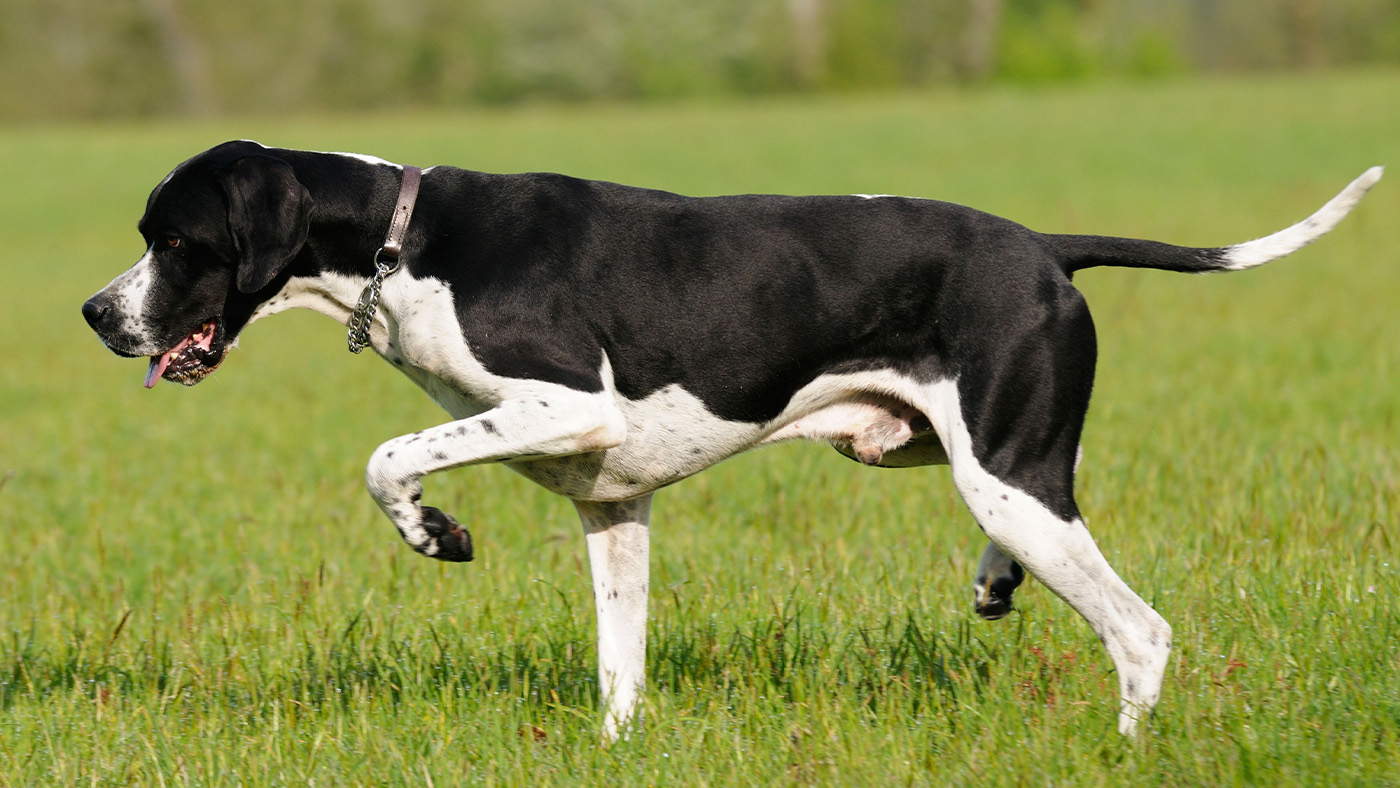
The Pointer, sometimes known as the English Pointer, is the “Cadillac of bird dogs”, thanks to their skills as a capable and versatile gundog. These hardworking dogs not only thrive as hunting companions, but also enjoy working in field trials and other dog sports such as canicross, agility and scentwork.
Though they are loving and loyal dogs, many owners report that they are more aloof than other pointing breeds, sometimes with a lower need for human companionship. While they bond closely with their families, make no mistake, these dogs are one of the most athletic dog breeds and supreme scenting machines.
10. Spinone Italiano

This ancient Italian breed is a real workhorse, bred to traverse the Italian Alps with ease. Their coarse, wiry coat gave protection from the thorny undergrowth in the region, and their muscular build was ideal for the endurance needed for long days in the mountains.
These days, their shaggy faces and kind expressions make them ideal companions, and they’re known for being slightly more docile than other pointing breeds. They are loyal family members, though they often need patience in training. While they are hugely popular in their native Italy as working dogs, they are less well-known in other parts of the world.
11. Vizsla
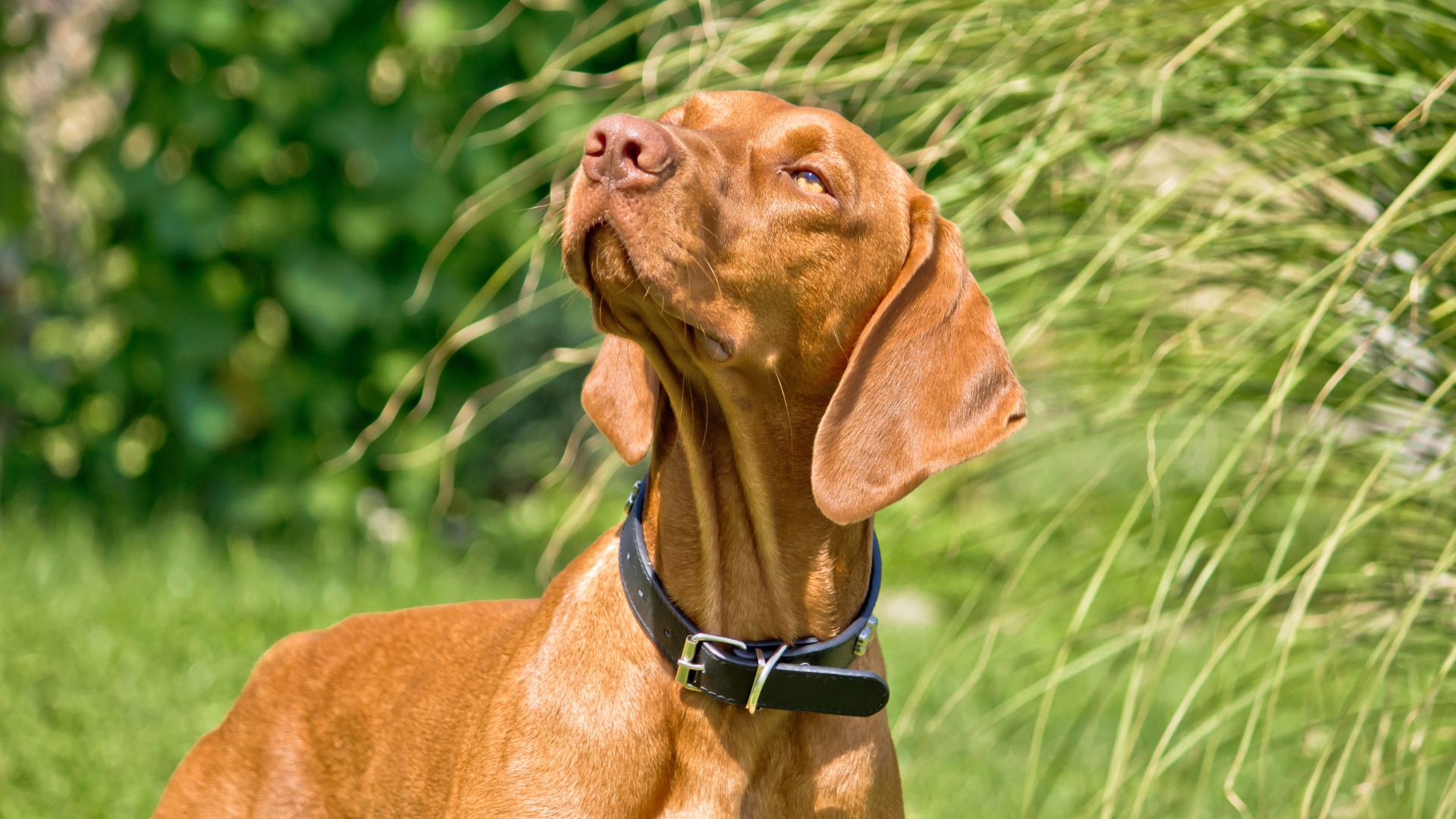
The athletic Vizsla hails from Hungary, and these intelligent dogs thrive on exercise and attention. They are light-footed and agile with plenty of stamina, making them a versatile hunting dog.
They are incredibly devoted to their owners, often being described as “Velcro dogs”, and don’t enjoy being left alone for long periods of time.
Their striking, rust-coloured coat and elegant build make this breed really stand out, and they’re popular running and hiking companions for adventurous families. As with most other pointer breeds, they can soon become destructive if they’re left to get bored.
12. Weimaraner
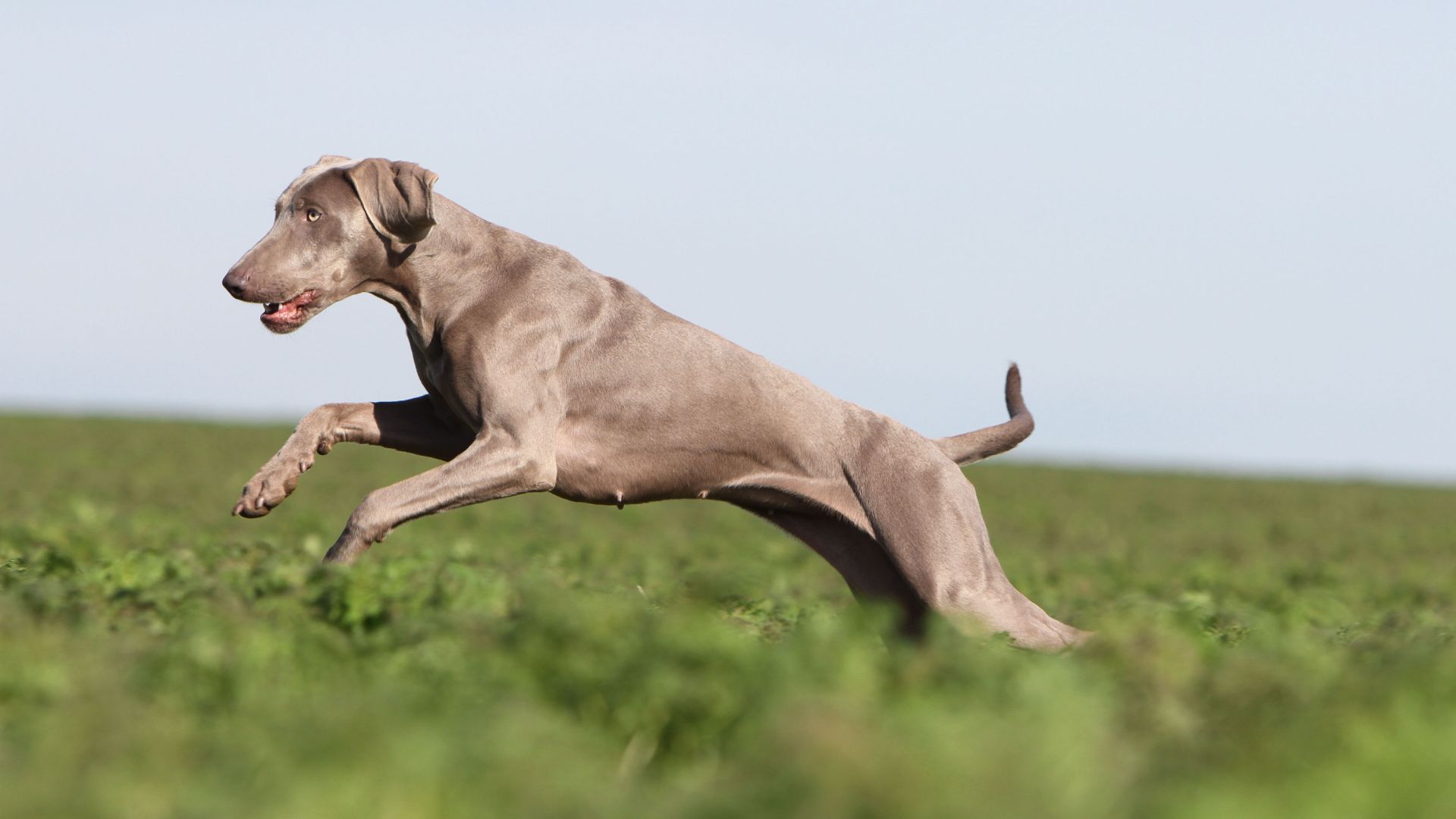
The Weimaraner is another popular German pointing dog, and these “grey ghosts” were originally bred to pursue large predators, such as mountain lions, wolves and bears. Now known for being bold and brave gundogs, they are not considered suitable in their native country as companion dogs.
These sleek, noble dogs are super-friendly and love spending time with their families. They require plenty of exercise and mental stimulation to keep their minds occupied, and they are renowned for their problem-solving skills.
13. Wirehaired Pointing Griffon
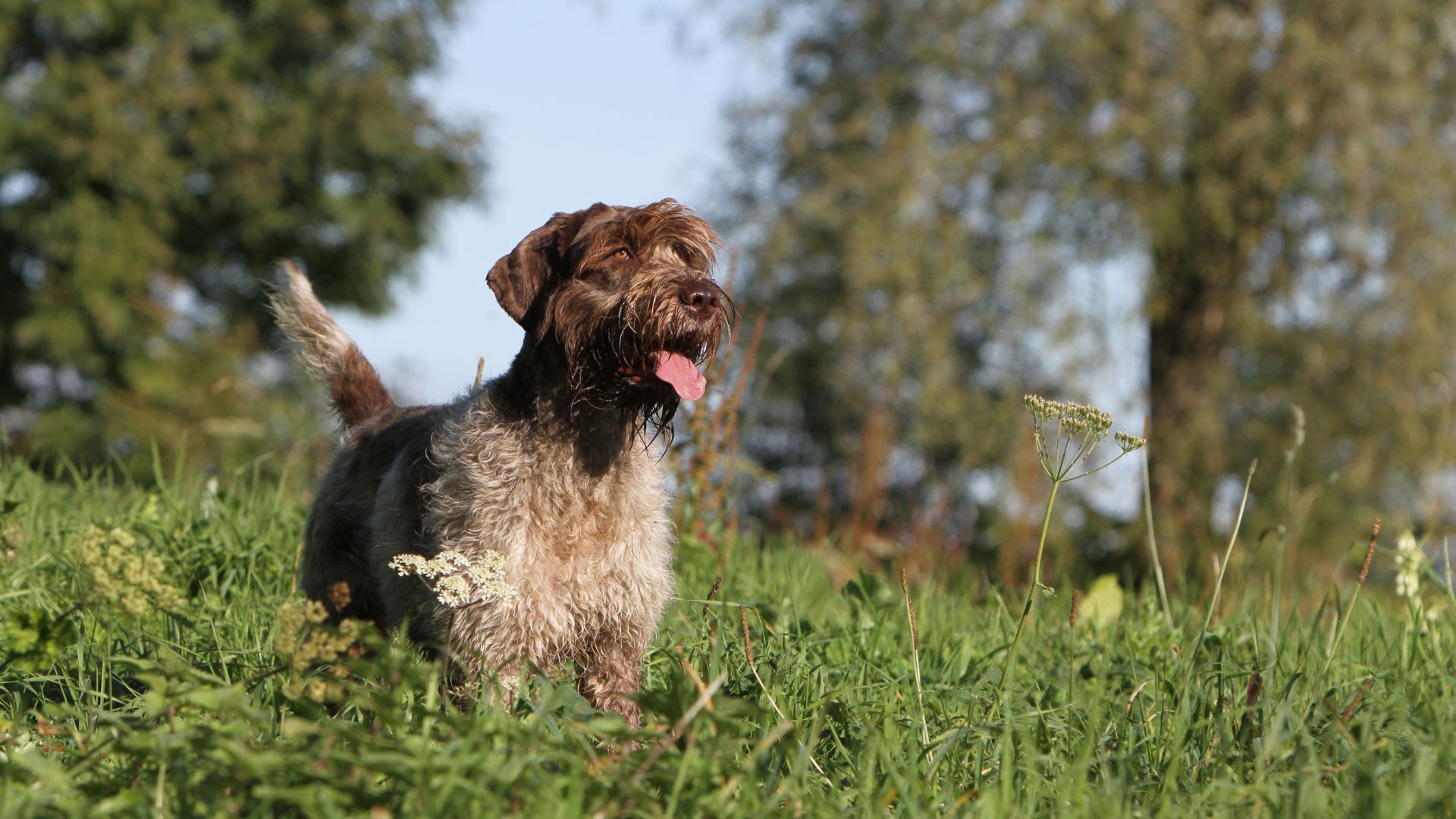
The Wirehaired Pointing Griffon was developed in the 1800s by Dutchman Eduard Korthals, and this breed is also known as the Korthals Griffon. This trainable breed is known as the “supreme gundog”, thanks to its working ability on land and in water.
They are affectionate and laid-back at home, getting along with children and other dogs. And despite their distinctive coats, they are low-shedding, making them appealing family companions. They thrive on regular exercise and form strong connections with their owners.
14. Wirehaired Vizsla
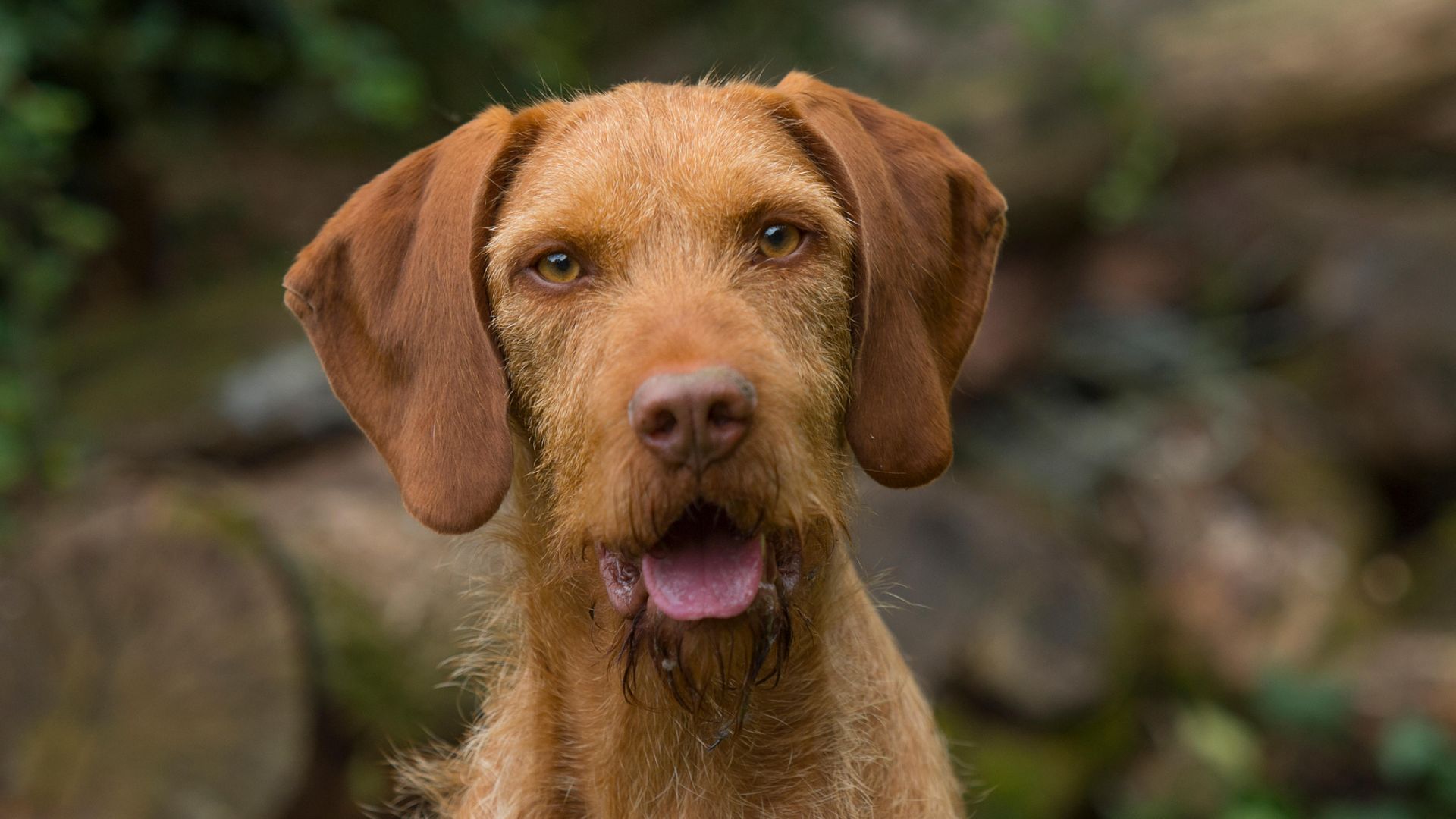
A close cousin to the Vizsla, the Wirehaired Vizsla has a coarser, more wiry coat, and they tend to be slightly larger, heavier dogs. The Wirehaired Vizsla is a more modern breed than the Vizsla, developed to work in rougher terrains and colder weather.
These versatile working dogs have a strong desire to please, and they will be very loyal to their family. Just like the Vizsla, they have high energy levels, but provided their needs are met, they make loving family pets.
What's it like to own a pointing breed?
I own a six-year-old German Shorthaired Pointer, Maple. She is the perfect breed for my family as we were looking for a loyal companion that my husband could take shooting while also being safe around our children. While Maple would happily be working all day, she is just as happy at home snuggled up on the sofa and is the most gentle soul with our one-year-old son.
Dr Rebecca MacMillan says: “Owning a pointing breed can be great fun, especially if you want someone to explore the great outdoors with. Pointers are very energetic, due to their working heritage, so they need an active owner who can give them plenty of exercise.”
While these dogs make great companions, as well as keep-fit buddies, Dr MacMillan warns that they can be “a little needy” at times: “They enjoy being close to their owners at home, which means they may follow you around or want to snuggle up with you on the couch. Pointers usually form strong bonds with their owners but can be a little aloof with strangers.”
However, they are “low maintenance” in the grooming department, says Dr MacMillan. “Most pointers will only require weekly brushing,” she explains, “as well as regular teeth brushing and nail trims.”
How do you train a pointing breed?
As with all high-energy working dog breeds, training pointing dogs can present a few challenges.
“These dogs have a strong sense of smell and a high prey drive, which means they could become easily distracted while out and about,” explains Dr MacMillan. “You will need to work on their recall to stop them chasing after birds or squirrels.”
Although their energetic nature can affect their concentration, pointing breeds are highly intelligent and are eager to please. Dr MacMillan recommends using a “firm and consistent” approach from an early age, rewarding your dog with plenty of praise – and treats, if they’re food-driven.
“Some owners use clicker training to help focus their pet’s attention, or a whistle to help with recall training,” adds Dr MacMillan. “These provide a clear sound that your pointer will soon learn to associate with commands. You may also want to consider obedience classes or field trials. Making sure your pointer gets plenty of exercise will be key to them being more settled and trainable.”
Read next: Most loyal dog breeds
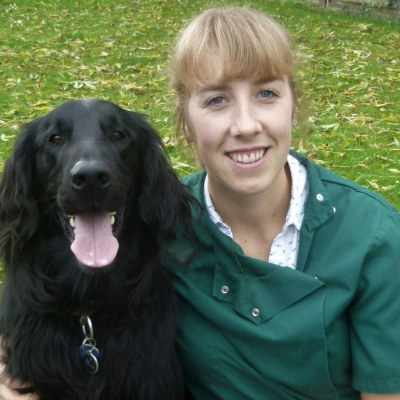
Dr MacMillan is a companion animal vet who has always had a passion for writing and client communication. She works in the South West and loves complex medical cases.
Edited by Georgia Guerin.
This feature was last updated in May 2025 by Victoria Jones.
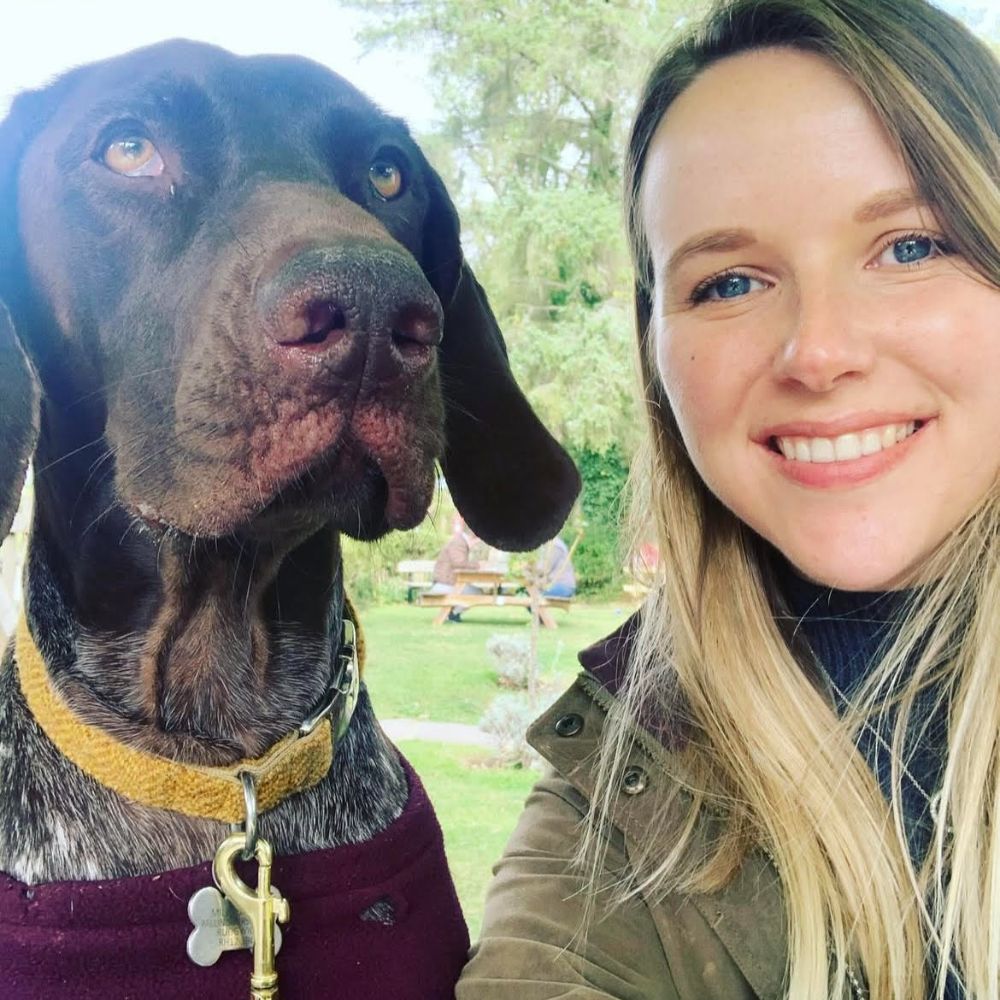
Victoria Jones is a freelance writer at PetsRadar. She has a decade of experience working on equestrian and countryside magazines – including on PetsRadar's sister title Horse & Hound for five years. She has done a variety of different jobs over the years, including sub-editing, writing, video editing and marketing.
Victoria is currently dog mum to Maple, a six-year-old German Shorthaired Pointer with endless energy. She also helps to look after her husband's marine fish tank, with her favourite inhabitants being the two clown fish, Michel and Francois.
She has previously owned cats and horses as well – at one point having a menagerie of two dogs, two cats and two horses, which kept her very busy indeed.
